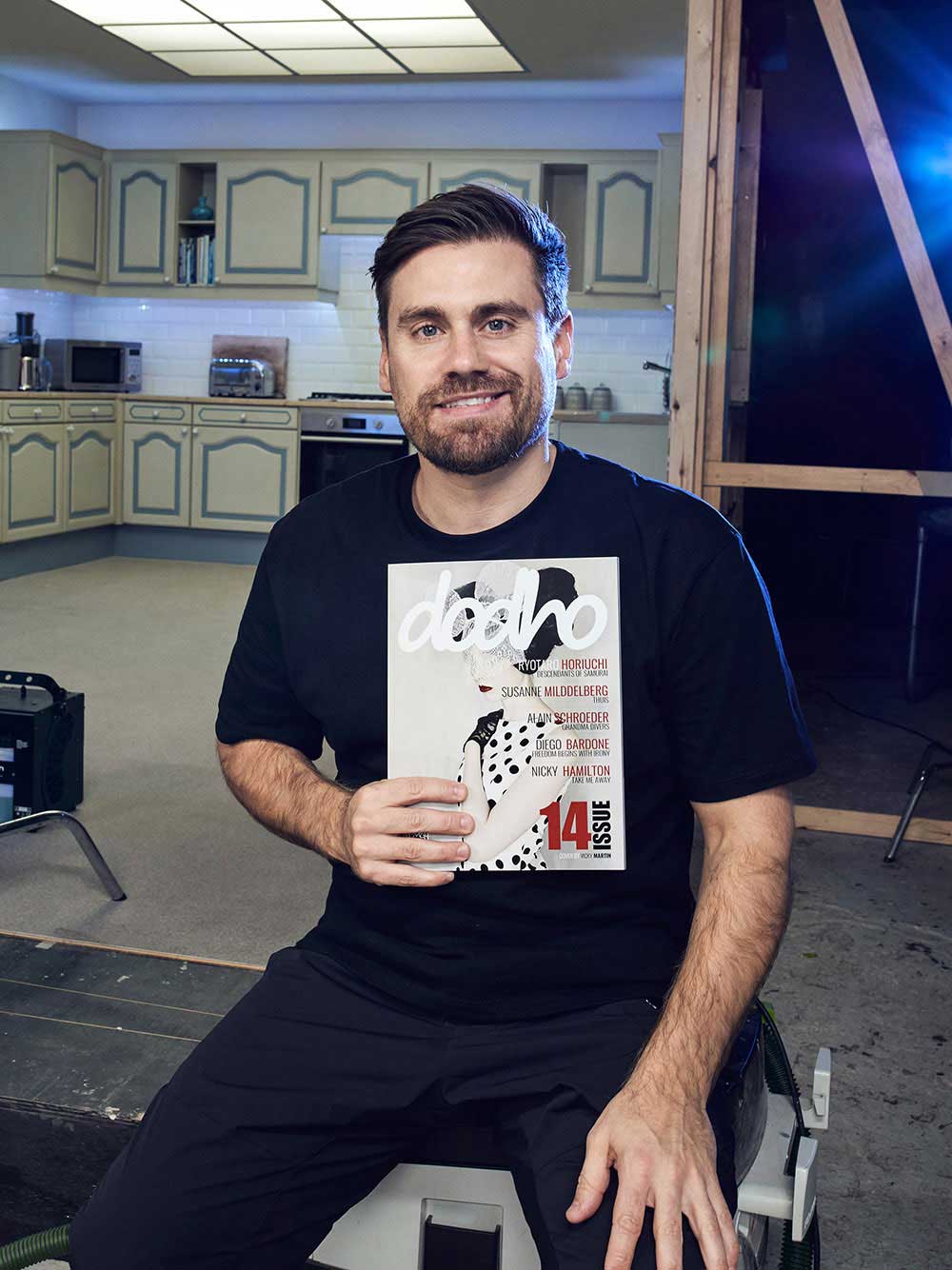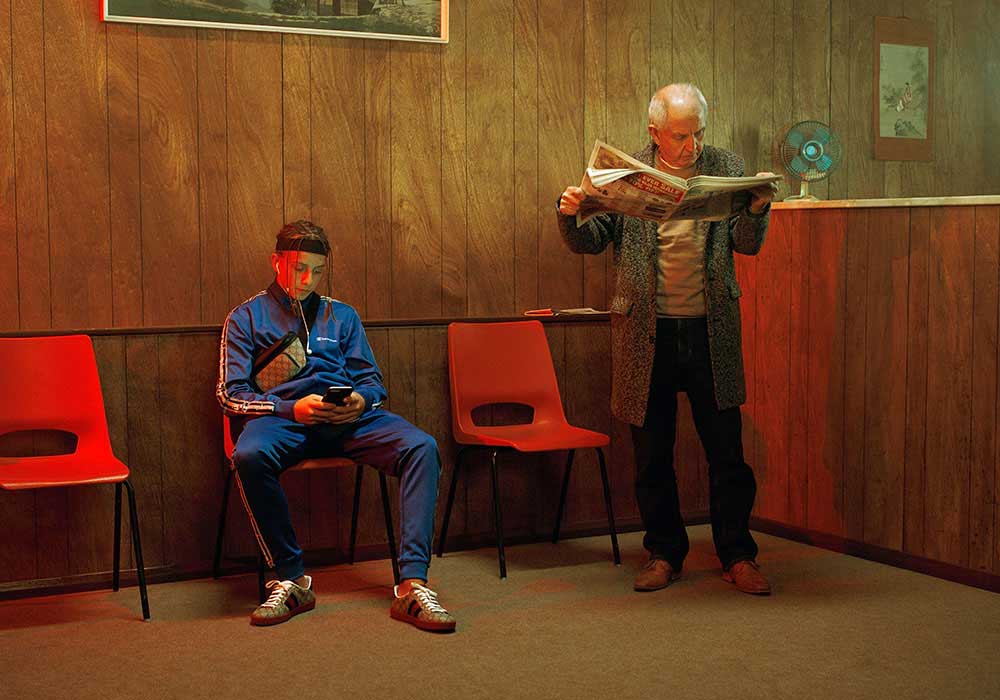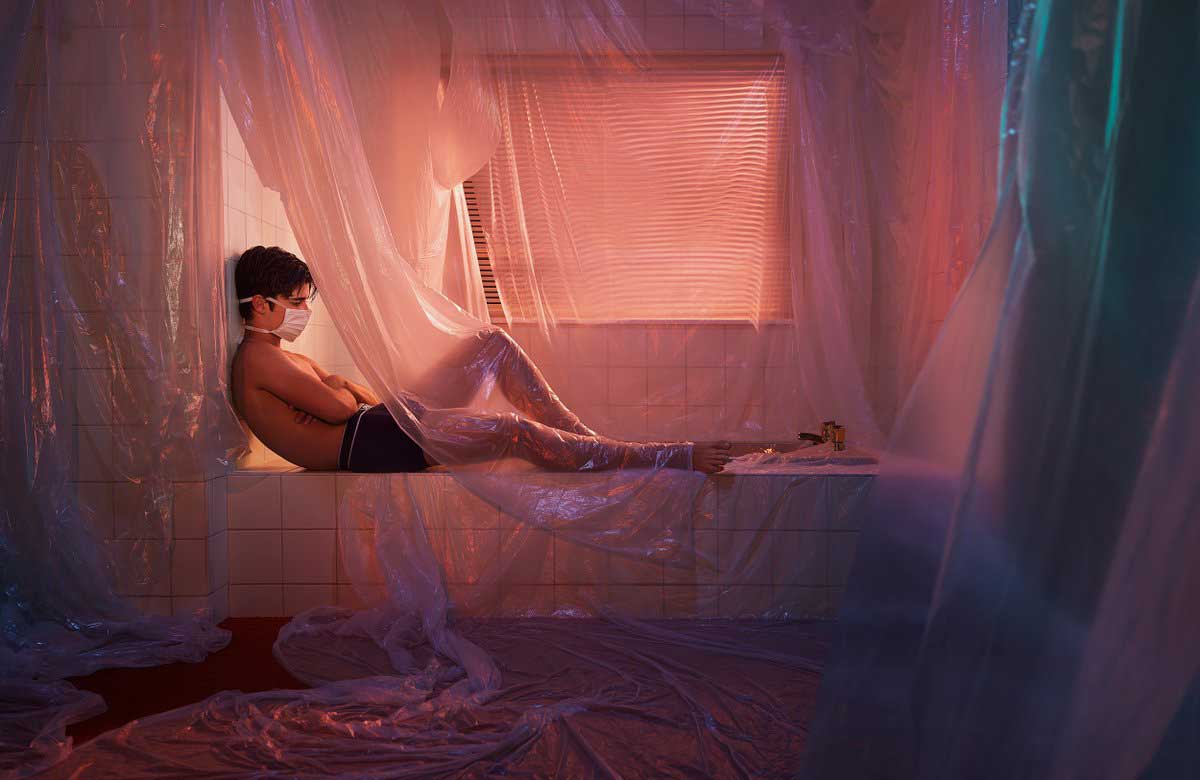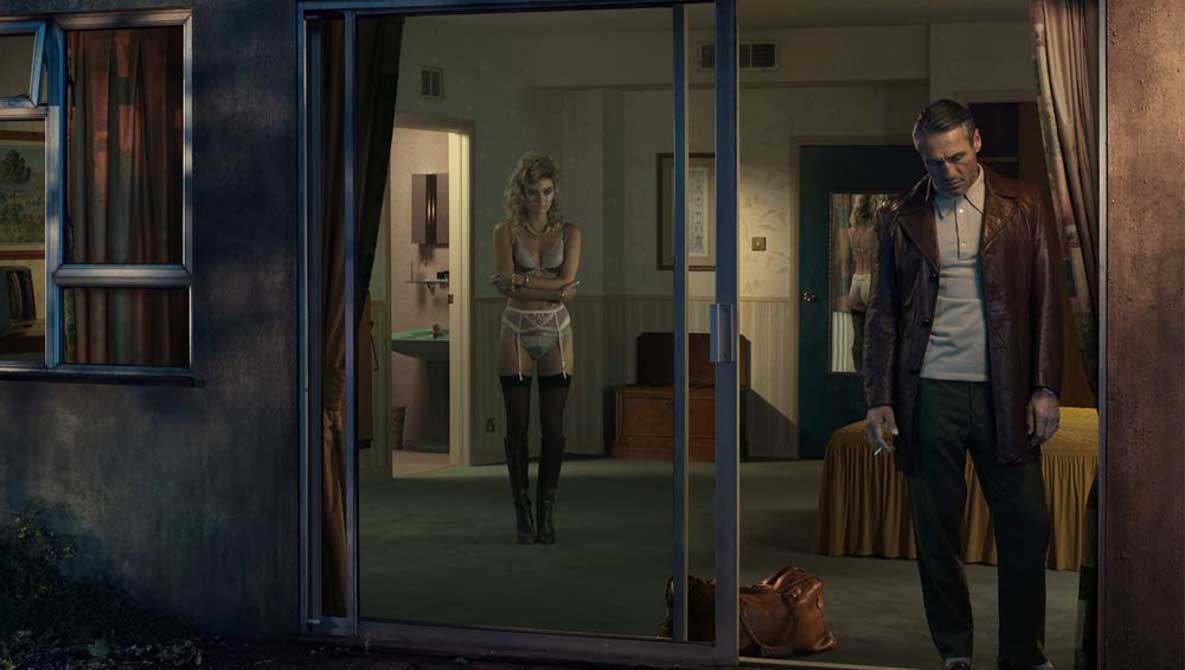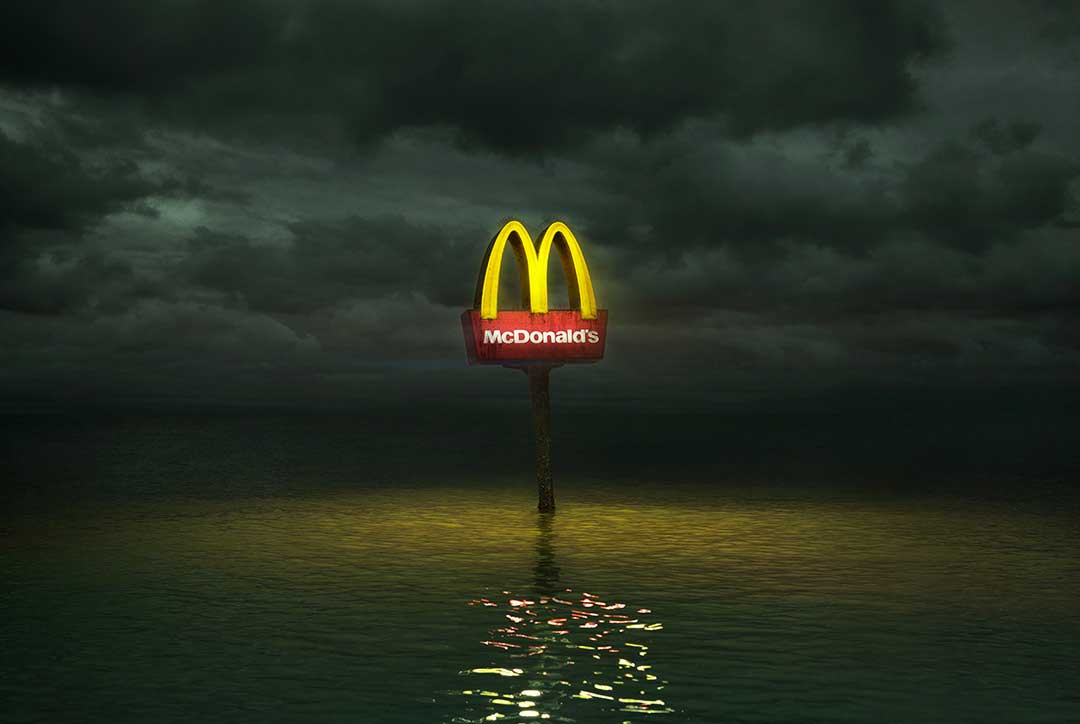There is an extremely voyeuristic character in Nicky Hamilton’s works. He is able to introduce us to detailed universes he designs and stages. He lets viewers overhear and have a peek at realistic storylines. His choices and ideas are intriguing and help him to show a whole meaningful narrative.
There is a contradictory quality in the truthful representations he uses and the fact he works with elaborate sets to express symbolism through performance. As Robert Bechtle, the American photorealist painter, Nicky tries to capture the real thing and makes us believe the plot. In the same movement, his works also remind me of Tim Eitel, like in Tim’s painting, his photo-series present reflective characters, we can feel their thinking and emotions. We become the spies as in The Rear Window‘s tradition. [Official Website][Print Edition][Digital edition]
Your work has had great attention and you have become a multi-award winning photographer. In a digitalized world that has become saturated with image, how do you get to the originality state of these unexpected photo-narratives?. And based on your experience, what piece of advice would you tell a new creator that is looking forward to doing something original?
Create work that is meaningful to you, if it’s original you’ll feel the fear, the uncertainty of how the idea will translate. Pre visualizing your idea can really help to test it before you go too far, this can be as basic as a pencil sketch or as in-depth as creating the idea using 3D software, group this pre visual with a lighting mood board and other visual references for the tone, then if it all still feels like a great idea to you then you’ve found something special.
The location for the shooting is always a key aspect for a photographer. Your sets are incredibly amazing, like from the best HBO or Netflix series. Your photos also remind me of Damien Hirst’s creatures. I must congratulate you for the refreshing own voice, far from being a product. How did you get to this decision to create your own universes and where are these coming from? How do you imagine these masterpieces’ stages?
My ideas sometimes sit with me for a number of years. If I keep coming back to the idea and the need to communicate it grows then I’ll develop the tone and how the production would come together. I have a very idiosyncratic approach to photography, I like to build worlds where my ideas sit in, often building the sets by myself, spending appropriate time on each creative decision, obsessing over the details, and dancing along the creative path.
There is a gossiping aspect of a narrator’s voice. In the series Take me Away, we find this traditional Chinese Take Away in Modern Britain. The light, color, and atmosphere are on point, so special and effective. There is a psychological game in each character, even the dog may tell a story. How do you manage to show this introspection? Tell me about how you portray people’s thoughts.
Take me Away is based upon a real-world Chinese takeaway close to my studio. Often on the drive home from work, I would see a guy sitting behind the counter watching TV and waiting for a customer, then on another occasion, a guy would be leaning on the counter reading the newspaper. These simple but powerful moments of waiting patiently caught my attention. I revisited the takeaway many times, making notes on the characters and behaviors that I witnessed, and then followed these findings when casting and directing the talent in my studio on a copy of the Chinese takeaway set that I had built.
There is a sensitive approach to the confinement and the covid pandemic in The Upside Down. The portrayal of your own children, the kid, and the teen, makes this series a very personal work. Like the new documentalists, for instance, Panos & Mary, you recreate reality and present it. These photos are so sincere that they reminded me of Susan Meiselas’s body of work. There is also a cathartic element, like a relief from the recreation. Your children have now become models or participants of the universes you depict. Tell me about this new bond you have established.
The Upside Down is a surreal look at the mental state of my family in lockdown during the Covid-19 pandemic. After just a few weeks in my 8-year-old son, William found it difficult to sleep alone, worrying that the world was going to end and without the daily routine of school, friends, and fun my hormonal teenager became frustrated and angry at us all, missing his girlfriend, playing football and even ‘real’ school work. The sudden change in them both made me see their world in an entirely new light, a world that I needed to portray. It’s an honest reflection of a surreal experience we were all going through as a family.
In The Lonely Man, the sets are complex and different. The aesthetics and atmosphere again are nailed. There is a narrator value in everything you capture. This is a multitask approach to photography, a full creative director job. It seems human relationships always bring some sort of melancholy and sadness in your works. Tell me about the process. How long does it take to capture an image the way you want it to be? are you a patient creator?
The Lonely Man is a reflection of my childhood relationship with my Dad. It took around 3 cathartic years to create, with each picture a recreation of a moment that shaped my early life. It took around 3 months to produce each picture, from the initial concept sketch to building the set, sourcing props, set dressing and styling, to finally lighting, shooting, and post-production. It’s tough to create such an in-depth project over such a long span of time and keeping my patients, there’s an excitement to share the work and also a desire to move on to something new when obsessing overtakes the value of the idea.
There is a striking image in your gallery: Sign of the Times. It seems you wanted to represent the idea of climate change to raise some awareness. There is also a pop art engine there, the consumerism of current society. Tell me about the ideas behind this terrific shot.
Sign of The Times shows us the results of climate change, polarised against the most iconic sign in the world with its ‘still turning on’ status symbolizing the political and economical stance to the near irreversible future that we’re headed for. I wanted to create a simple but striking visual to reflect this and a change in direction to my usual studio work was refreshing too.
Seigar
Seigar is a passionate travel, street, social-documentary, conceptual, and pop visual artist based in Tenerife, Spain. He feels obsessed with the pop culture that he shows in his works. He has explored photography, video art, writing, and collage. He writes for some media. His main inspirations are traveling and people. His aim as an artist is to tell tales with his camera, creating a continuous storyline from his trips and encounters. He is a philologist and works as a secondary school teacher. He is a self-taught visual artist, though he has done a two years course in advanced photography and one in cinema and television. His most ambitious projects so far are his Plastic People and Tales of a City. He has participated in several international exhibitions, festivals, and cultural events. His works have been featured in numerous publications worldwide. His last interests are documenting identity and spreading the message of the Latin phrase: Carpe Diem. Recently, he received the Rafael Ramos García International Photography Award. He shares art and culture in his blog: Pop Sonality.



